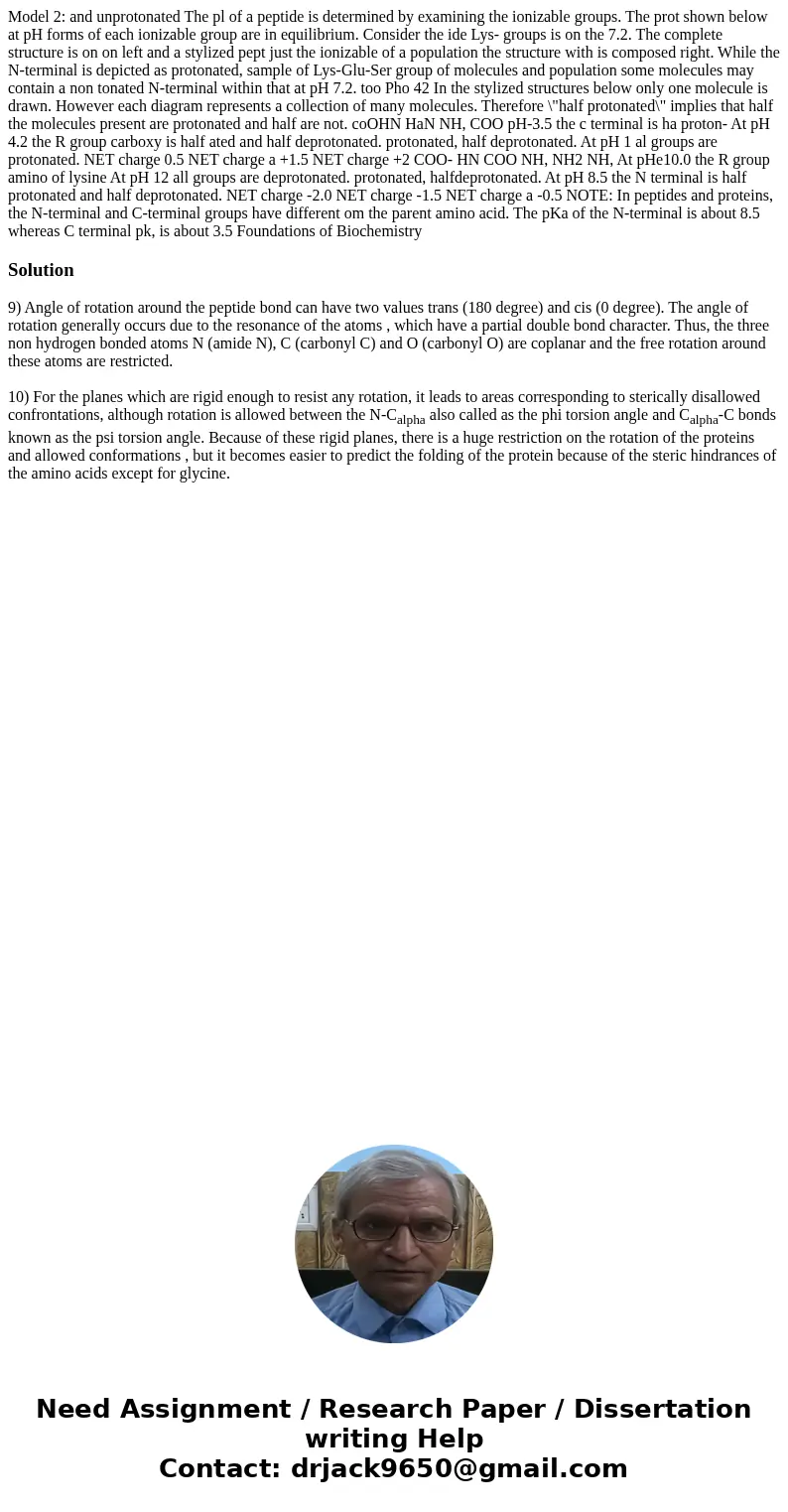Model 2: and unprotonated The pl of a peptide is determined by examining the ionizable groups. The prot shown below at pH forms of each ionizable group are in equilibrium. Consider the ide Lys- groups is on the 7.2. The complete structure is on on left and a stylized pept just the ionizable of a population the structure with is composed right. While the N-terminal is depicted as protonated, sample of Lys-Glu-Ser group of molecules and population some molecules may contain a non tonated N-terminal within that at pH 7.2. too Pho 42 In the stylized structures below only one molecule is drawn. However each diagram represents a collection of many molecules. Therefore \"half protonated\" implies that half the molecules present are protonated and half are not. coOHN HaN NH, COO pH-3.5 the c terminal is ha proton- At pH 4.2 the R group carboxy is half ated and half deprotonated. protonated, half deprotonated. At pH 1 al groups are protonated. NET charge 0.5 NET charge a +1.5 NET charge +2 COO- HN COO NH, NH2 NH, At pHe10.0 the R group amino of lysine At pH 12 all groups are deprotonated. protonated, halfdeprotonated. At pH 8.5 the N terminal is half protonated and half deprotonated. NET charge -2.0 NET charge -1.5 NET charge a -0.5 NOTE: In peptides and proteins, the N-terminal and C-terminal groups have different om the parent amino acid. The pKa of the N-terminal is about 8.5 whereas C terminal pk, is about 3.5 Foundations of Biochemistry
9) Angle of rotation around the peptide bond can have two values trans (180 degree) and cis (0 degree). The angle of rotation generally occurs due to the resonance of the atoms , which have a partial double bond character. Thus, the three non hydrogen bonded atoms N (amide N), C (carbonyl C) and O (carbonyl O) are coplanar and the free rotation around these atoms are restricted.
10) For the planes which are rigid enough to resist any rotation, it leads to areas corresponding to sterically disallowed confrontations, although rotation is allowed between the N-Calpha also called as the phi torsion angle and Calpha-C bonds known as the psi torsion angle. Because of these rigid planes, there is a huge restriction on the rotation of the proteins and allowed conformations , but it becomes easier to predict the folding of the protein because of the steric hindrances of the amino acids except for glycine.

 Homework Sourse
Homework Sourse